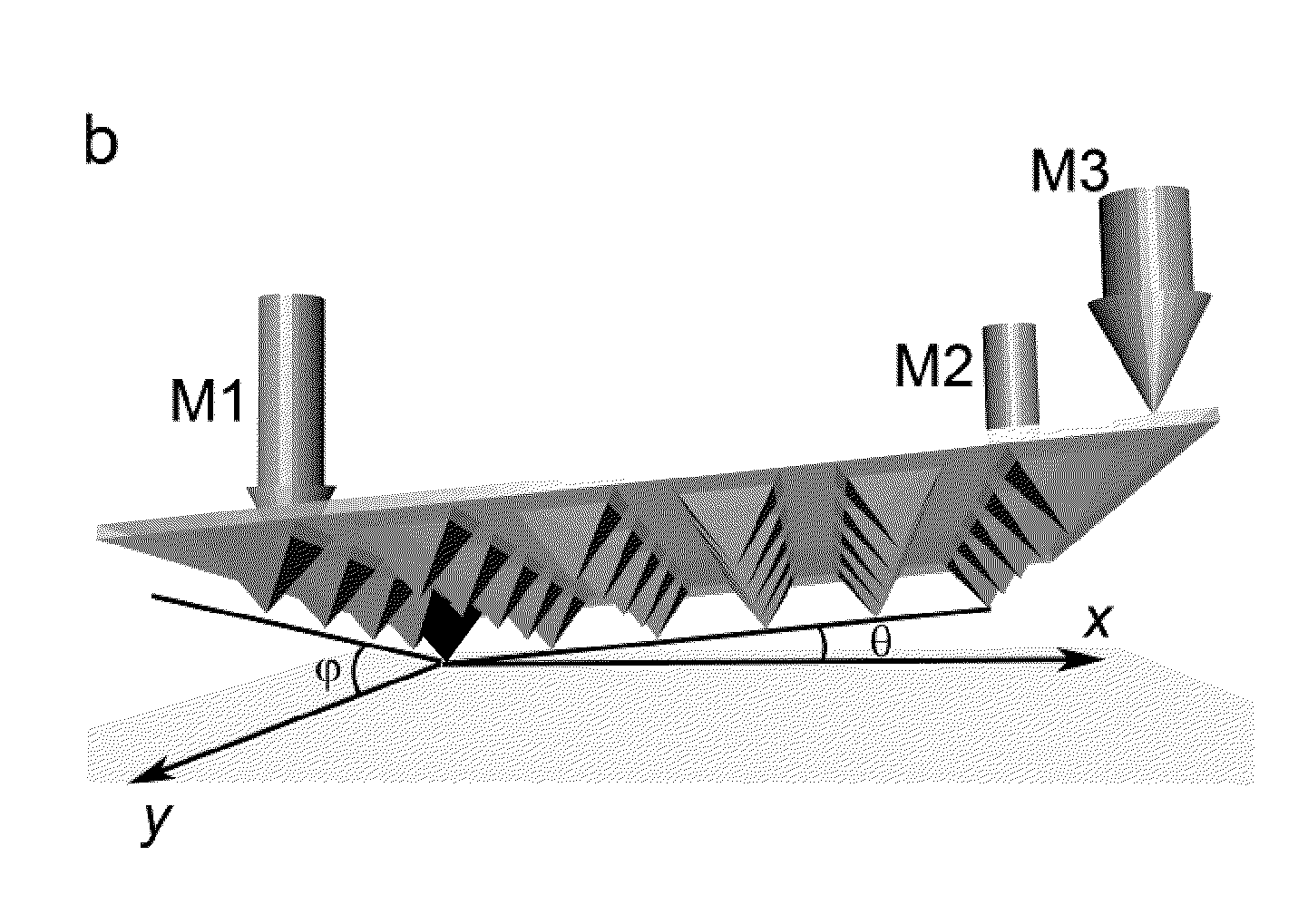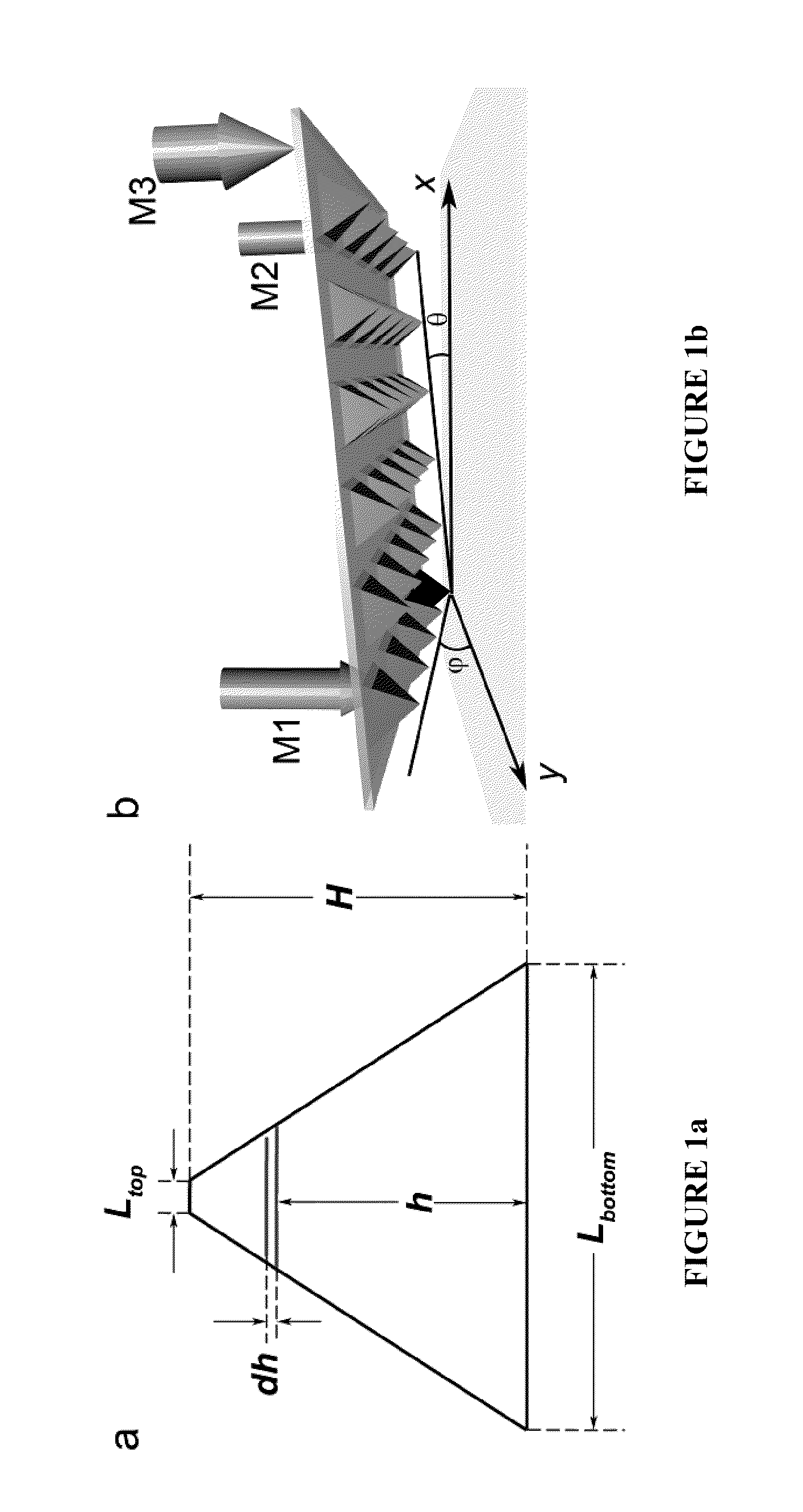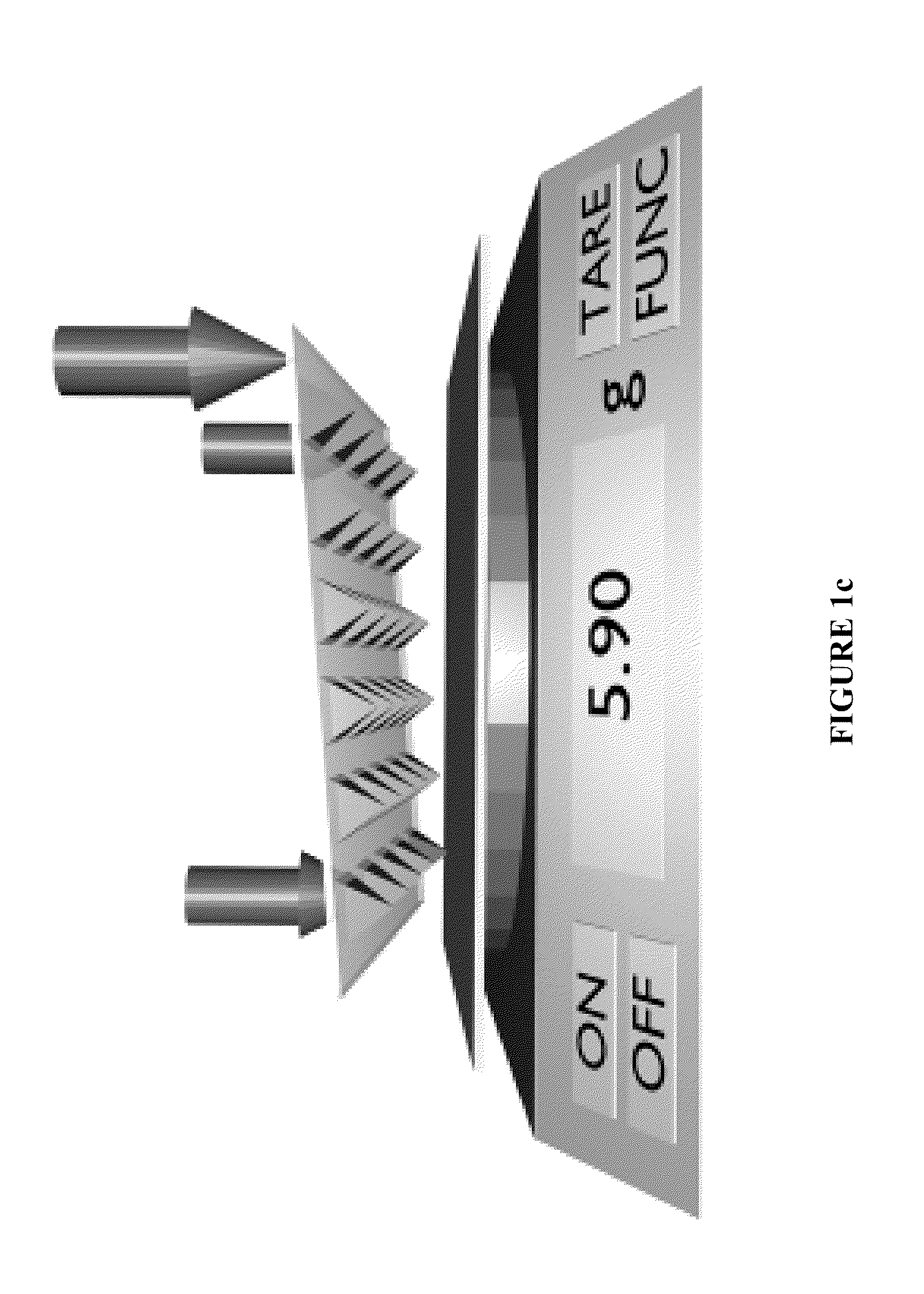Force Feedback Leveling of Tip Arrays for Nanolithography
a technology of nanolithography and tip array, which is applied in the direction of force/torque/work measurement apparatus, instruments, photomechanical apparatus, etc., can solve the problem that the optical method of leveling is not ideal, and the best optical leveling technique cannot resolve less than a 0.02° differen
- Summary
- Abstract
- Description
- Claims
- Application Information
AI Technical Summary
Benefits of technology
Problems solved by technology
Method used
Image
Examples
example 1
Leveling a Polymer Pen Array
[0133]A method of leveling in accordance with an embodiment of the disclosure was tested using a PPL pen array mounted onto an NSCRIPTOR (NanoInk, Inc.) nanolithography platform. The polymer pen array was 1 cm2, and included approximately 10000 pens, with a spacing D between tips of about 80 μm. A 25 nm thermally evaporated Au thin film with a 5 nm Ti adhesive layer on a S / SiOx substrate was mounted on a force sensor (Ohaus, PS121) having a sensitivity of 0.1 mN.
[0134]The polymer pen array was leveled using a method in accordance with an embodiment of the disclosure. Specifically, the polymer pen array was brought into contact with the surface by extending the z-piezo and the total force was subsequently measured. The polymer pen array was tilted to vary φ while holding θ constant and the total force was again measured upon a Z0 of 12 μm until a local maximum of total force was measured. Referring to FIG. 4a, the measured values of total force were plotte...
example 2
Printing with a Leveled Polymer Pen Array
[0135]Patterns of MHA on Au were written at different values of total force by adjusting θ and φ from the level position. The pens were inked with 16-mercaptohexadecanoic acid (MHA), which can form a self-assembled monolayer (SAM) on a Au surface. A 25 nm thermally evaporated Au thin film with a 5 nm Ti adhesive layer on a S / SiOx substrate was mounted on a force sensor (Ohaus, PS121) having a sensitivity of 0.1 mN. The level position was determined as described in Example 1. The global maximum of total force occurred at 36 mN, and MHA dots were written on the substrate by extending the z-piezo to 10 μm, resulting in patterns in which a single dot was written by each pen in the array (FIG. 5a). The motors were adjusted to a value of (θ, φ)=(0.01, 0), which corresponded to a total force of 33.6 mN, and a pattern of MHA dots was written on the substrate (FIG. 5b). Finally the motors were adjusted to a value of (θ, φ)=(−0.01, 0), which correspond...
PUM
 Login to View More
Login to View More Abstract
Description
Claims
Application Information
 Login to View More
Login to View More - R&D
- Intellectual Property
- Life Sciences
- Materials
- Tech Scout
- Unparalleled Data Quality
- Higher Quality Content
- 60% Fewer Hallucinations
Browse by: Latest US Patents, China's latest patents, Technical Efficacy Thesaurus, Application Domain, Technology Topic, Popular Technical Reports.
© 2025 PatSnap. All rights reserved.Legal|Privacy policy|Modern Slavery Act Transparency Statement|Sitemap|About US| Contact US: help@patsnap.com



